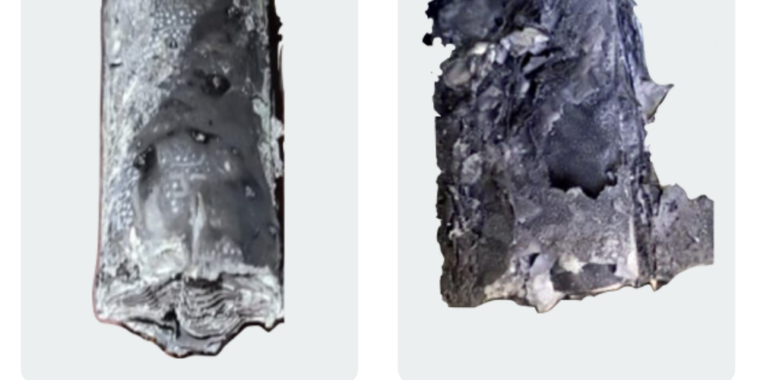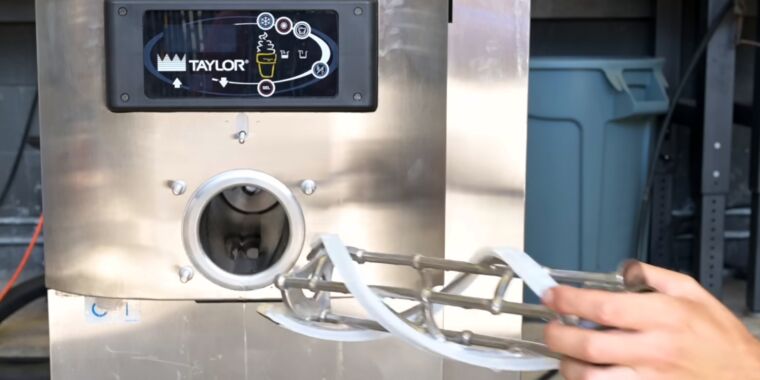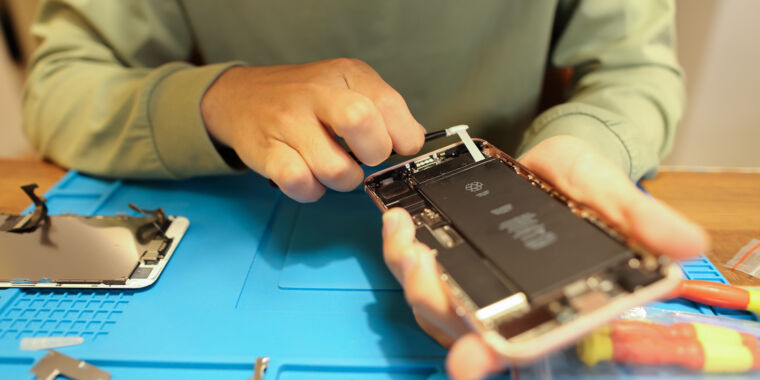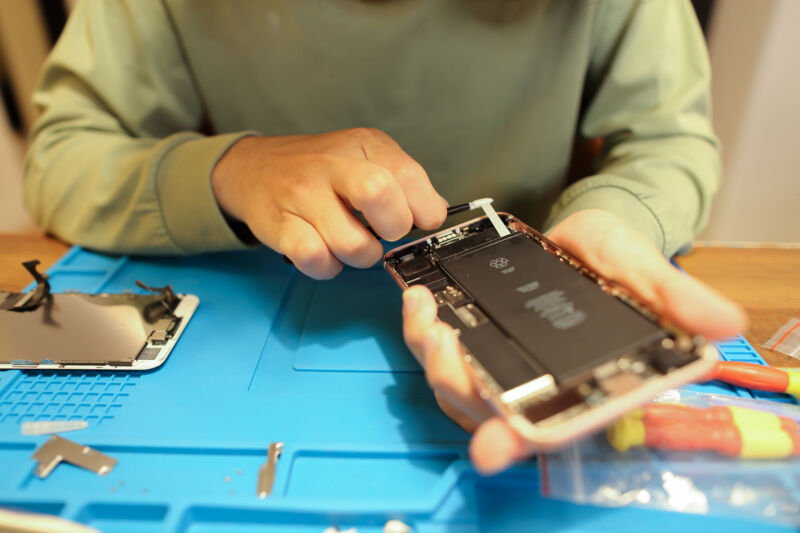Apple’s “Longevity, by Design” argues its huge scale affects its repair polices
Apple Longevity by Design whitepaper —
Apple must consider volume, but also the world outside its closed loop.
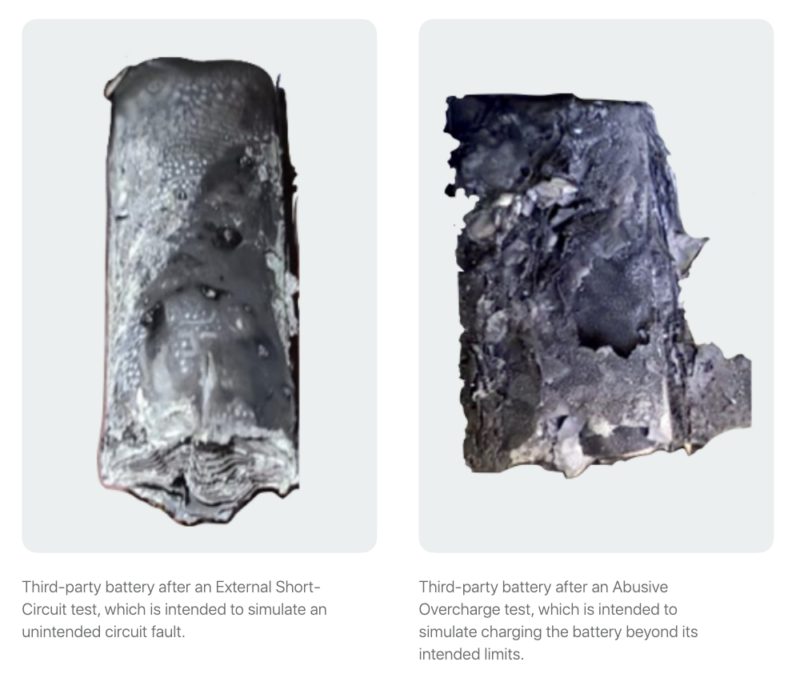
Enlarge / Apple has a lot to say about the third-party battery market in “Longevity, by Design,” specifically about how many batteries fail to meet testing standards.
Apple
Earlier this week, Apple published a whitepaper titled “Longevity by Design.” The purpose, Apple says, is to explain “the company’s principles for designing for longevity—a careful balance between product durability and repairability.” It also contains some notable changes to Apple’s parts pairing and repair technology.
Here is a summary of the action items in the document’s 24 pages:
- The self-service diagnostics tool that arrived in the US last year is now available in 32 European countries.
- True Tone, the color-balancing screen feature, can soon be activated on third-party screens, “to the best performance that can be provided.”
- Battery statistics, like maximum capacity and cycle count, will be available “later in 2024” for third-party batteries, with a notice that “Apple cannot verify the information presented.”
- Used Apple parts, transferred from one to another, will be “as easy to use as new Apple parts” in select products “later this year.”
- Parts for “most repairs” from Apple’s Self Service Repair program will no longer require a device serial number to order.
Changes timed to “later this year” may well indicate their arrival with iOS 18 or a subsequent update.
Apple’s take on repair focuses on scale
To whom is Apple’s document explaining its principles? Apple might say it’s speaking to consumers and the public, but one might infer that the most coveted audience is elected representatives, or their staff, as they consider yet another state or federal bill aimed at regulating repair. Earlier this year, Oregon and Colorado passed repair bills that stop companies from halting repairs with software checks on parts, or “parts pairing.” Other recent bills and legal actions have targeted repair restrictions in Minnesota, Canada, and the European Union.
Apple came out in support of a repair bill in California and at the federal level, in large part because it allows for parts and tools pricing at “fair and reasonable terms” and requires non-affiliated vendors to disclose their independence and use of third-party parts to customers.
“Longevity, by Design” stakes out Apple’s position that there are things more important than repair. Due to what Apple says is its unique combination of software support, resale value, and a focus on preventing the most common device failures, the company “leads the industry in longevity” as measured in products’ value holding, lifespans, and service rates, Apple says. Hundreds of millions of iPhones more than five years old are in use, out-of-warranty service rates dropped 38 percent from 2015 to 2022, and initiatives like liquid ingress protection dropped repair rates on the iPhone 7 and 7 Plus by 75 percent.
“The reliability of our hardware will always be our top concern when seeking to maximize the lifespan of products,” the whitepaper states. “The reason is simple: the best repair is the one that’s never needed.”
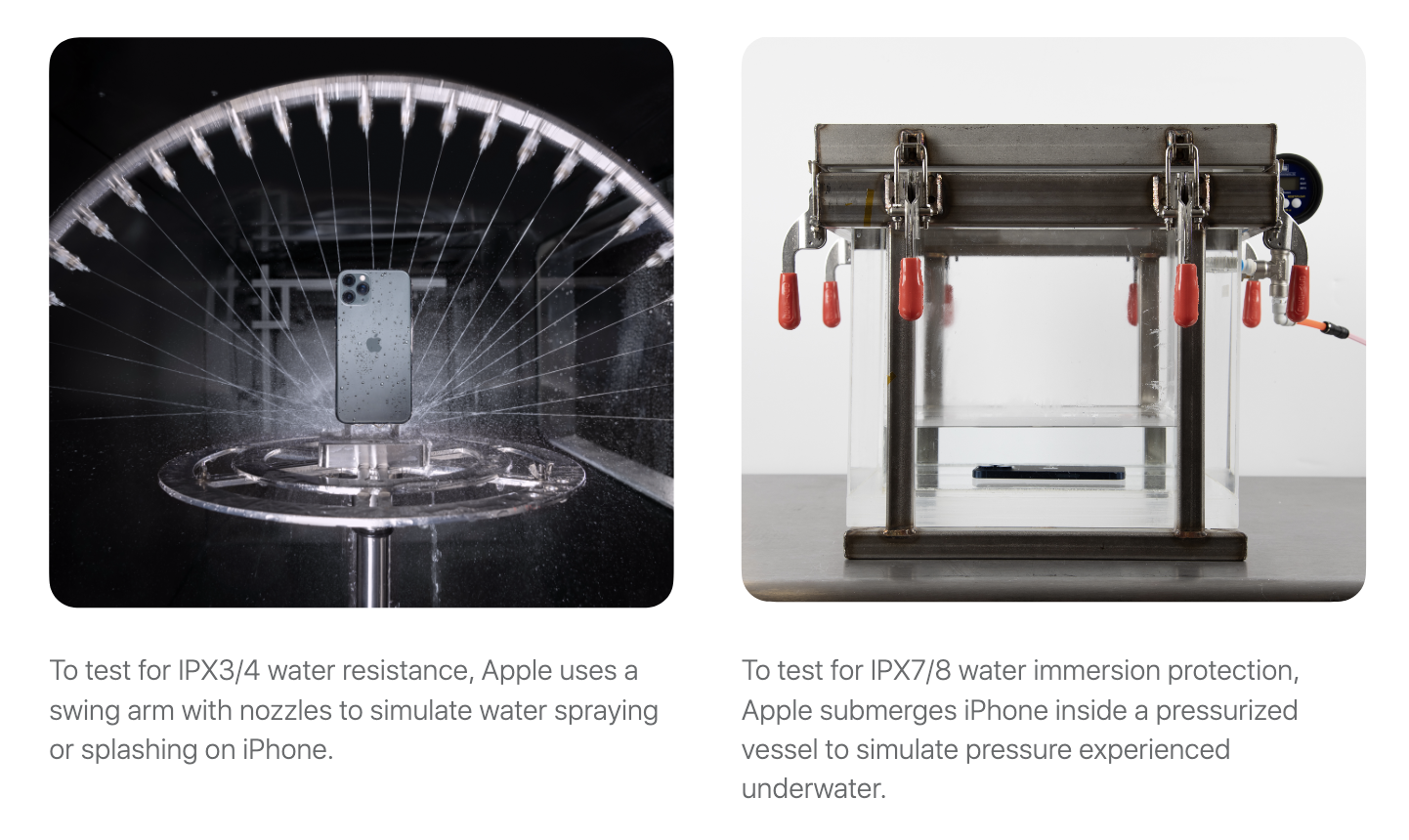
Photos from Apple’s “Longevity, by Design” document showing the water ingress testing as part of its design.
Apple
Consider the charge port
Apple offers the charging port on iPhones as “an internal case study” to justify why it often bundles parts together rather than making them individually replaceable. From the independent repair shops and techs I’ve talked to in my career, iPhone charging ports, and the chips that control them, are not an uncommon failure point. “Cheap charging cables from 7-11 are serial killers,” one board-level repair shop once told me. Apple disagrees, saying it must consider the broader impact of its designs.
“Making the charging port individually replaceable would require additional components, including its own flexible printed circuit board, connector, and fasteners that increase the carbon emissions required to manufacture each device,” Apple states. This could be justified if 10 percent of iPhones required replacement, but Apple says “the actual service rate was below 0.1%.” As such, keeping the port integrated is a lower-carbon-emission choice.
Apple’s “Longevity, by Design” argues its huge scale affects its repair polices Read More »
